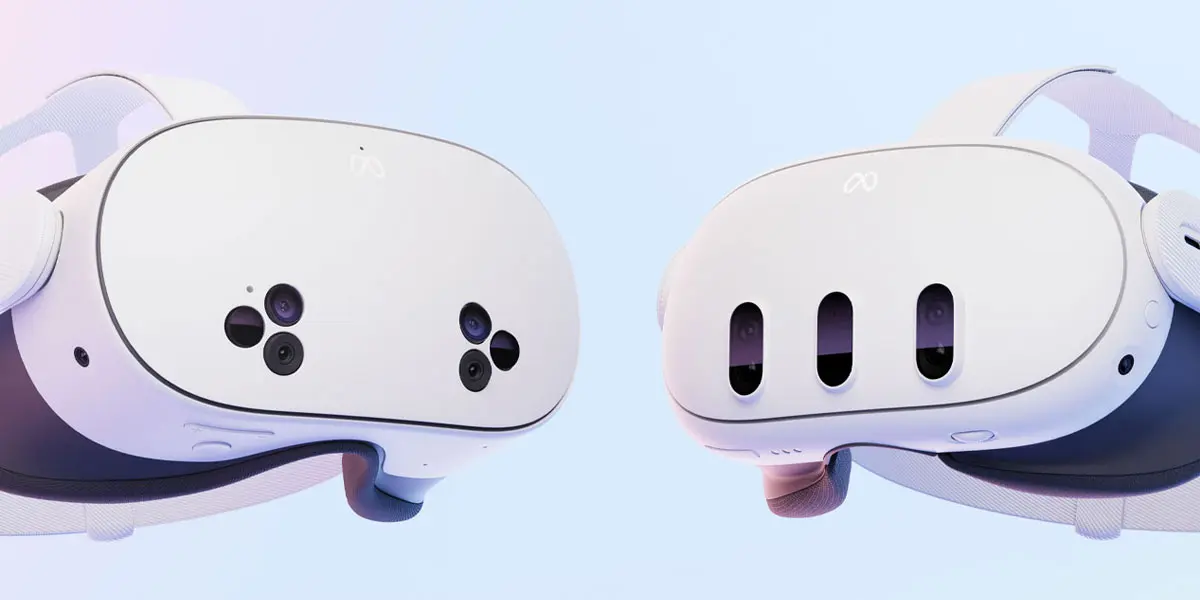The Meta Quest 3S comes to the market as a simplified and affordable version of the popular Meta Quest 3, but no less interesting for that. Meta seeks to democratize Virtual Reality by offering an affordable device that maintains solid performance and innovative features.
In this review, we explore the technical specifications, the key differences with its big sister and why it could be a great choice for different types of users.
What makes Meta Quest 3S special?
In a market where every new release seems to focus on being more expensive or more sophisticated, the Meta Quest 3S stands out for its proposal: a complete, balanced and affordable VR experience. These glasses have been designed with the user in mind who is looking to enter the world of Virtual Reality without compromising quality or emptying the wallet.
Meta has adjusted the design and specifications to achieve a competitive product in its segment. But how much of a sacrifice does it make compared to the Quest 3? That's what we'll explore.
Design and ergonomics: Combination of simplicity and functionality
One of the highlights of the Quest 3S is its practical and functional design. Although they are not as light and compact as the Quest 3, the use of Fresnel lenses instead of pancake lenses helps to reduce costs without penalizing the user experience too much.
Key design aspects:
- Weight and comfort: At approximately 514 grams, they are slightly heavier than other models on the market, but maintain a well-balanced design to avoid fatigue during long sessions.
- Adjustable strap: They offer a basic but functional strap, which can be a point of improvement for those looking for more head support.
- Face padding: Although more modest in materials, it is still comfortable and allows a secure fit for different face shapes.
While its construction is not as premium as other models, it maintains a standard of quality sufficient for most users.
Display and visual quality: Is Fresnel technology sufficient?
One of the points where the Quest 3S differs from the Quest 3 is in the use of Fresnel lenses instead of pancake lenses. These lenses are bulkier and somewhat less advanced, but still offer a solid immersive experience.
- Resolution: 1832 x 1920 pixels per eye, resulting in clear and sharp images, ideal for gaming and visually demanding applications.
- Refresh rate: Up to 120 Hz, ensuring smooth motion and reducing the possibility of motion sickness.
- Field of view: Although slightly smaller than the Quest 3, it is still competitive with other goggles in this price range.
Visual performance is more than acceptable for a device that seeks to balance quality and accessibility.
Hardware and performance: Power at a good price
The Meta Quest 3S inherits much of the hardware from the Quest 3, ensuring solid performance in most applications. This is particularly remarkable considering their price range.
- Processor: Equipped with the Snapdragon XR2 Gen 2, one of the most powerful chips in the VR world, ensuring fast and smooth performance.
- RAM: With 8 GB of RAM, they handle multitasking applications and demanding games with ease.
- Storage: Available in 128 GB and 256 GB configurations, sufficient for most content libraries.
This hardware makes the Quest 3S ideal for both casual gaming and more complex immersive experiences.

Ecosystem and content: fun for everyone
A major advantage of the Meta Quest 3S is its integration with Meta's ecosystem of apps and games. With access to the Meta Quest Store, users have a wide range of options ranging from popular titles such as Beat Saber and Superhot VR, to meditation and exercise apps such as FitXR.
In addition, Meta has worked to ensure that the Quest 3S is compatible with the latest content, including mixed reality applications that combine the virtual and physical worlds.
Key differences between Quest 3 and Quest 3S
Although the Quest 3S shares the processor and RAM of the Quest 3, there are key differences that make it more affordable:
- Lenses: Fresnel lenses are less advanced than the pancake lenses of the Quest 3, which reduces cost but increases size and weight.
- Autonomy: The battery is slightly less efficient, resulting in less time of continuous use.
- Design: The Quest 3S is less compact and lacks some of the ergonomic optimizations of the Quest 3.
- Price: With a significantly lower cost, they are a more attractive option for those looking for an affordable VR experience.
These differences do not drastically affect the core experience, but are important when deciding between the two models.

Who are Meta Quest 3S for?
The Meta Quest 3S is ideal for users who are looking for:
- An affordable entry into the world of virtual reality.
- A versatile device for gaming, fitness, entertainment and educational applications.
- An immersive experience without the costs associated with premium devices.
They are perfect for those who are just beginning to explore Virtual Reality or are looking for a second device for family or friends.
Conclusion: A perfect balance between price and quality.
The Meta Quest 3S is an example of how technology can be affordable without sacrificing performance or quality. While not the most advanced goggles on the market, they offer a VR experience that will satisfy most users, especially those on a tighter budget.
If you're looking for an affordable and reliable way to enter the world of virtual reality, the Meta Quest 3S is a tough choice to beat. With their extensive ecosystem, functional design and hardware power, these goggles prove that innovation doesn't have to be expensive.
SIMILAR CONTENT












 RETURN
RETURN







